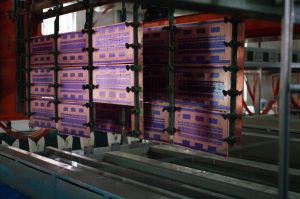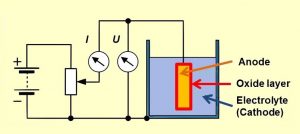A surface treatment is often employed to do one of two things to a metal part: improve the appearance of the metal or provide protection against corrosion. Engineers will often specify the precise surface treatment that is necessary to provide the finish required by the part.

Additionally, some of the commonly used surface treatments provide enhanced electrical or mechanical properties that develop and enhance the functionality of the component.
Experts such as https://www.poeton.co.uk/standard-treatments/ can provide more information about basic treatments.
1. Electroplating
Electroplating takes place when the part to be plated is submerged within a solution, which then has an electrical current passed through. Metals used for electroplating include chromium, cadmium, copper and gold. Most base metals that can conduct electricity can be plated in this manner. It is expected that growth in the tech industry will increase the penetration of electroplating over the next decade.
2. Electroless plating
Items coated using electroless plating are treated in much the same way as those that are electroplated; however, this process does not use electricity. The plating is achieved by including a reduction agent in the plating solution. Electroless plating is often used if a uniform thickness of plating is desired, which does not often happen with electroplating.

3. Chemical treatment
When chemically treating metals, a thin layer of sulfide and oxide is created by way of a chemical reaction. This treatment is often used to colour metal, to prime surfaces that are to be painted and to provide protection against corrosion.
4. Anodic oxidation
Anodic oxidation is often used for lighter metals, such as titanium and aluminium. The oxide films are created with electrolysis, with the porous nature of the oxide films making them ideal for colouring or dyeing parts. Anodisation helps to prevent corrosion on parts that are made from aluminium, whilst thicker coats can be utilised if wear resistance is desired.
5. Hot dipping
Hot dipping is a surface treatment in which the part is submerged into dissolved lead, zinc, tin, iron or solder to produce a metallic film on the surface. This is generally used to provide corrosion resistance for parts that will be used in extreme environments, such as for guard rails on roads.
6. Vacuum plating
There are many methods for surface plating metals that use a vacuum, including vacuum vapour deposition, sputtering, ion nitriding, ion plating and ion implantation. These ionised oxides, nitrides and metals are made in a controlled environment. Following this, the part to be treated is transferred to the vacuum chamber, with the treatment materials deposited very accurately onto the surface. Treatments such as titanium nitride are used to extend the life of carbide and high steel metal cutting tools, for example.
There are plenty of other treatments available for metal parts that increase the wear resistance, corrosion resistance or solderability of these substances. On the other hand, some are mostly decorative, changing the appearance or colour of the parts treated.





